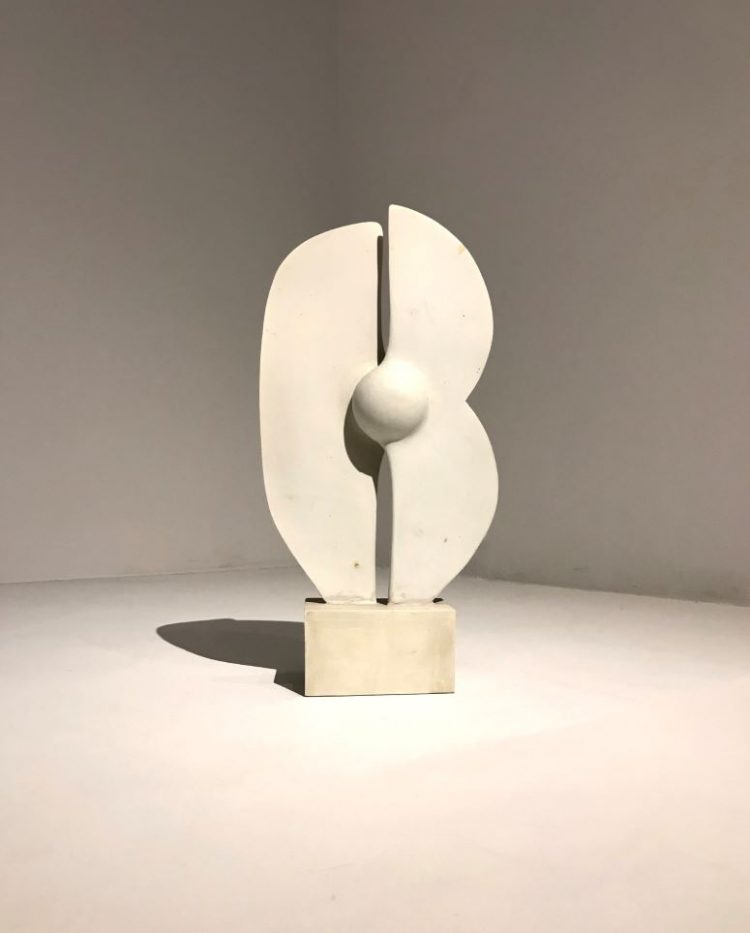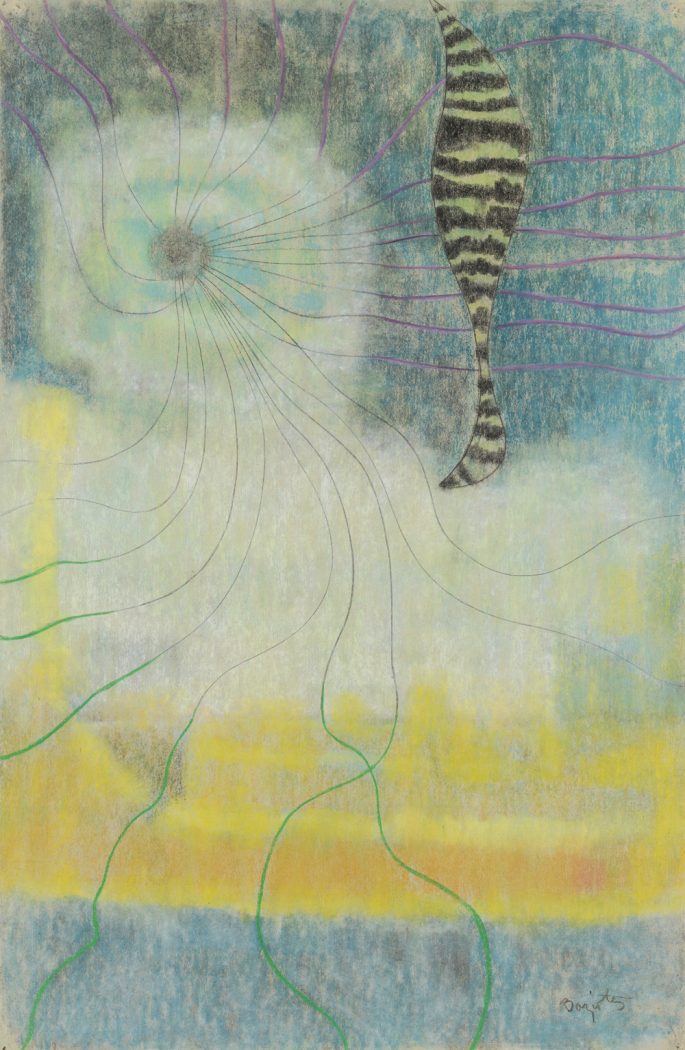
Ruth Duckworth, Untitled, 1989, Porcelain, 15 1/2 x 7 7/8 x 3 in. Gift of Jane and Arthur Mason, 2016
In a career that spanned more than six decades, Ruth Duckworth (b. Hamburg, Germany 1919-d. Chicago, 2009) is recognized as one of the most innovative and important modernist sculptors. Although she began her career in Liverpool and London by exploring stone and wood carving, as well as metal casting, she ultimately decided to focus on ceramics in the mid-1950s. Her facility with clay led her to stoneware and porcelain, creating vessels and sculptures that were radically freeform, organic, and liberated from function. Most importantly, she demonstrated that clay was a viable medium for sculpture.
The Duckworth sculpture recently gifted to The Phillips Collection is an unglazed porcelain tabletop work from 1989. It is the first work by this pioneering modernist sculptor to enter the museum. Duckworth has been called an “alchemist of abstraction” whose prolific body of work in ceramics, stoneware, and bronze is boundary-crossing in its material innovation and visually seductive in its austere refinement of form. Her smooth forms have been influenced by both the stylized modernisms of Henry Moore, Constantin Brancusi, and Isamu Noguchi, as well as ancient Egyptian, Mexican, and Cycladic art.
In her studio Duckworth had what she called her “play table” where she would begin every day using the parts of abstracted forms already sanded to the desired translucency. The Duckworth sculpture gifted to the Phillips is a unique object composed of two “blades.” Mounted vertically on a base, one slightly in front of the other, there is a sense of poised interaction between the two similar, yet different slab-like forms, with the shadow between an active linear element. Approaching clay as a sculptor, rather than as a potter, Duckworth brought aesthetic rigor to her work that masterfully continues the aesthetics of modernism into the 21st century.


